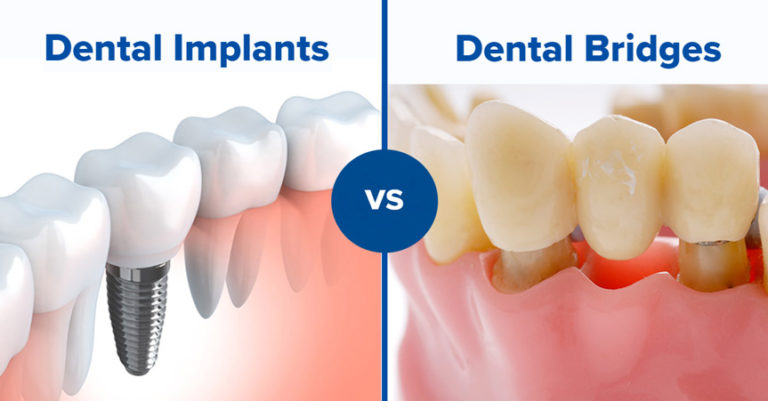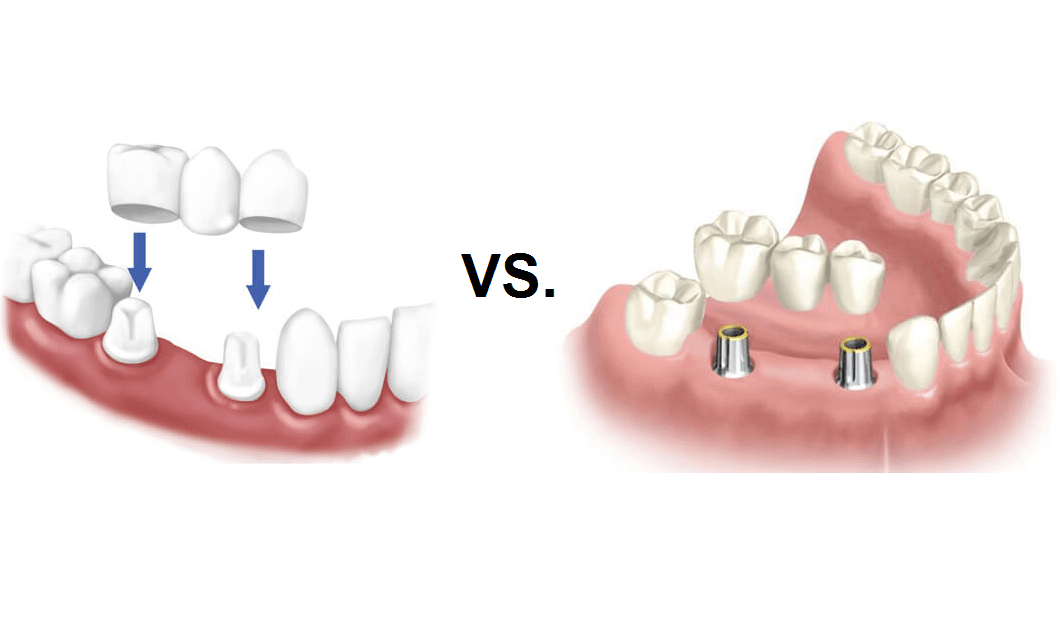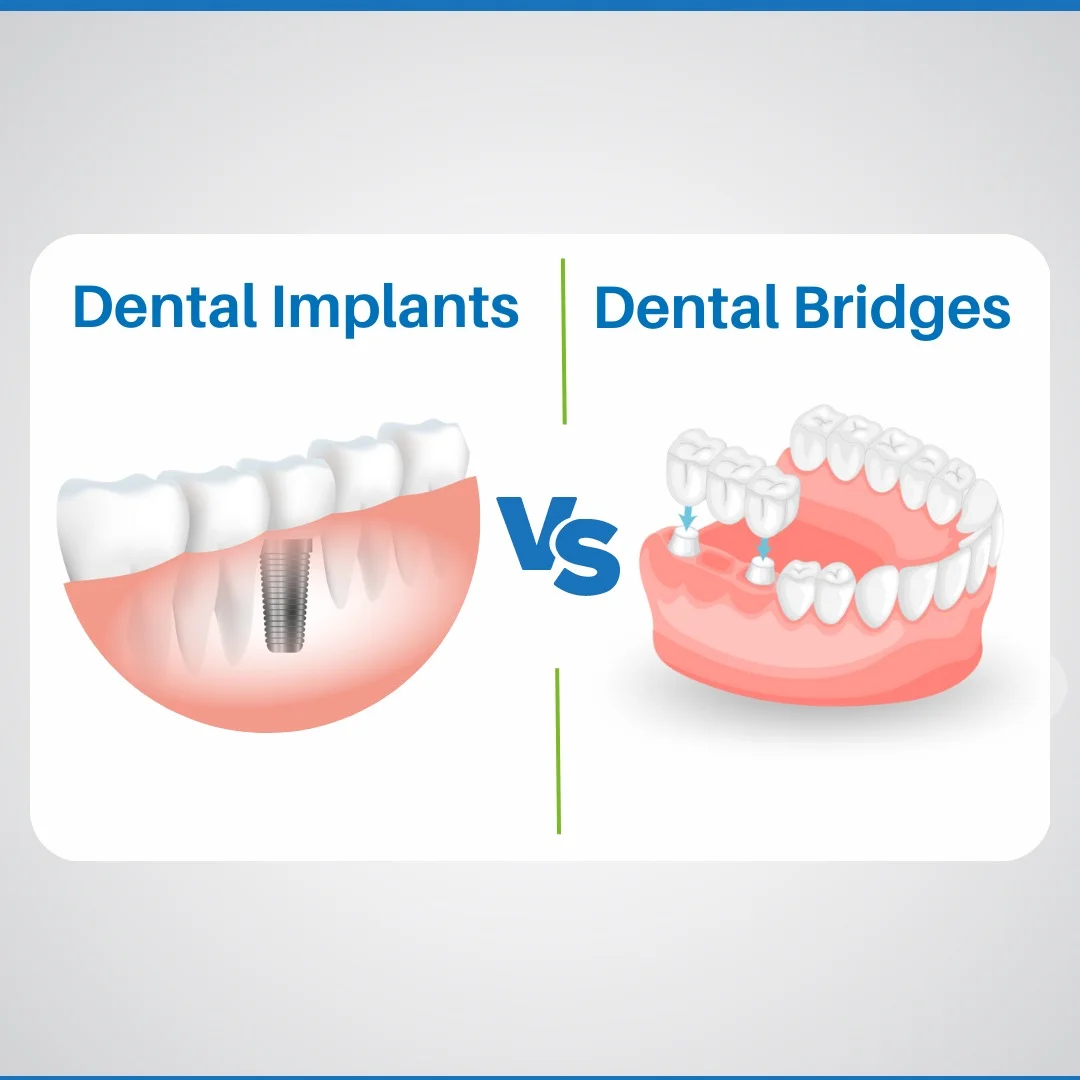Losing a tooth can be a stressful experience, leading to anxiety about appearance, chewing ability, and long-term costs. When considering professional tooth replacement, two options stand out: the fixed dental bridge and the durable dental implant. Both restorations can beautifully restore your smile, but they function fundamentally differently in your mouth. Making the right choice—especially if you are planning treatment abroad in locations like Turkey—requires understanding the crucial differences in procedure, longevity, and overall investment.
Dental implants are more expensive upfront but can be cheaper long-term, while dental bridges have a lower initial cost but often require replacement every 5-15 years.
A single implant can cost $3,000–$6,500, while a bridge might cost $1,800–$4,500 per tooth. The final cost depends on individual factors like the number of teeth, materials, and any necessary additional procedures like bone grafting.
This comprehensive guide breaks down the debate of dental bridge vs implant to help you choose the solution that best fits your oral health goals and budget.
Bridge vs. Implant: Understanding the Core Difference
The primary distinction between a bridge and an implant lies in how each structure replaces the missing tooth root. A dental implant replaces the root, while a bridge uses adjacent teeth as anchors. This difference in foundation has massive implications for your long-term oral health and jawbone structure.
What is a Dental Implant?
A dental implant is the closest solution you can get to a natural tooth replacement. It consists of a titanium post that is surgically placed into the jawbone, acting as an artificial tooth root. After a healing period (osseointegration), a custom crown is attached to the post. The key benefit is that the implant is self-supporting and integrates directly with the bone.
What is a Dental Bridge?
A dental bridge, specifically a traditional bridge, is a prosthetic device used to bridge the gap created by one or more missing teeth. It involves a false tooth (pontic) that is held in place by crowns placed on the natural teeth flanking the gap. Unlike an implant, a bridge sits on top of the gums and relies entirely on the support of its neighboring teeth.
Dental Bridge vs Implant Cost: The Long-Term Investment

For patients concerned with dental bridge vs implant cost—a major consideration when traveling for treatment—it is crucial to look beyond the initial price tag. While a bridge is often cheaper upfront, an implant can prove to be the more cost-effective option over a lifetime. This shift is due entirely to the superior longevity of implants.
Dental bridge Cost
- Initial Cost: Lower, as it’s generally a less complex procedure that can be completed in a few visits.
- Typical Price: $1,800–$4,500 per tooth, depending on the materials and number of teeth being replaced.
- Long-Term Cost: Higher due to a shorter lifespan. Bridges typically need to be replaced every 5–15 years.
- Procedure: Requires altering and placing crowns on adjacent healthy teeth to support the new tooth (pontic).
Dental implant Cost
- Initial Cost: Higher, as it is a multi-stage surgical process that includes a healing period.
- Typical Price: $3,000–$6,500 per tooth, including the implant post, abutment, and crown.
- Long-Term Cost: Lower, as implants can last a lifetime with proper care, often making them more cost-effective over the long term.
- Procedure: A more permanent solution that involves surgically placing a post in the jawbone, which fuses with the bone to act as a new tooth root.
- Additional Procedures: Costs can increase significantly if bone grafting or other procedures are needed before the implant can be placed.
Pros and Cons: A Side-by-Side Comparison

When comparing a tooth implant vs dental bridge, weigh these crucial factors that affect your health and daily life.
| Feature | Dental Implant (Gold Standard) | Dental Bridge (Traditional) |
| Longevity | 20+ years, often permanent (Titanium post lasts a lifetime) | 5–15 years (Requires replacement over time) |
| Jawbone Health | Preserves Bone. Stimulates the jawbone, preventing deterioration and maintaining facial structure. | Does Not Preserve Bone. Can lead to bone loss (resorption) under the missing tooth gap. |
| Adjacent Teeth | No Impact. Functions independently; healthy neighboring teeth are left untouched. | Requires Modification. Healthy adjacent teeth must be ground down to support the crowns. |
| Procedure Time | Longer (3–6 months). Requires a surgical phase and a healing period for osseointegration. | Shorter (2–3 weeks). Completed quickly, often in just two appointments. |
| Maintenance | Simple. Cleaned just like a natural tooth (brushing and flossing). | Challenging. Requires special tools (floss threaders or water flossers) to clean underneath the pontic. |
| Success Rate | Very High: Studies show 97% success rate at 10 years (Source: Healthline). | High, but lower than implants: Relies on the integrity of the two supporting teeth. |
Which Option is Right for Your Turkish Dental Journey?
Your target audience is interested in high-quality dental clinics, often seeking out value that combines excellent care with cost savings in places like Turkey. The decision between a bridge and an implant should factor in your health, time constraints, and long-term financial view.
When a Dental Bridge is Recommended
A bridge is often the better choice in specific scenarios:
- Existing Damage: If the teeth adjacent to the gap already have large fillings or require crowns, modifying them for a bridge is less detrimental.
- Time Constraints: If you need a faster, non-surgical solution due to travel or scheduling, a bridge can be completed quickly (1–2 weeks).
- Health Limitations: If underlying medical conditions (like uncontrolled diabetes) or insufficient jawbone density make oral surgery for an implant too risky.
When a Dental Implant is the Gold Standard
Implants are consistently recommended by dentists as the superior long-term solution because they prioritize oral health:
- Long-Term Value: If you want a solution that avoids repeat costs and procedures for the next two decades.
- Preservation of Teeth: If your surrounding teeth are perfectly healthy, an implant is the only option that leaves them completely untouched.
- Bone Health: If maintaining the integrity of your jawbone and facial structure is a priority.
Frequently Asked Questions (FAQs)
Does a dental implant always require a bone graft?
No, a bone graft is not always necessary for a dental implant. It is only required if the patient has insufficient bone density or volume in the jaw. This often happens if the tooth has been missing for a long time.
Which is easier to clean, a dental bridge or an implant?
A dental implant is significantly easier to clean. Since the implant stands alone, you simply brush and floss it like a natural tooth. A dental bridge is connected, requiring special tools like a floss threader to clean underneath the false tooth.
Can a dental bridge be converted into an implant later?
You cannot convert a bridge into a single implant directly. If a bridge fails, the entire prosthetic is removed. An implant procedure can then be performed, but it requires the jawbone to be assessed and potentially grafted if bone loss has occurred under the old bridge.
What is more painful: getting a dental bridge or a dental implant?
Generally, patients report that the recovery from dental implant surgery involves more discomfort than the procedure for a dental bridge. The implant requires minor oral surgery to place the titanium post, leading to a few days of localized soreness, bruising, and swelling. Conversely, a dental bridge placement is non-surgical, involving only filing down the adjacent teeth and cementing the restoration, resulting in minimal pain, usually just temporary sensitivity. Pain during the implant procedure itself is managed with local anesthesia.
What is the cost comparison for a 3-unit dental bridge versus three separate tooth implants?
For three missing teeth side-by-side, the comparison shifts from a 3-unit bridge to an implant-supported solution. A 3-unit bridge remains the cheaper option upfront, covering all three missing teeth using just two supporting crowns. However, replacing all three with three individual dental implants (three posts and three crowns) is significantly more expensive initially, as you are paying for three separate surgeries and materials. The long-term value of the three implants, however, is much higher due to their durability and superior bone preservation.
Are dental implants suitable for patients with bone loss?
Yes, but it is more complex. Significant bone loss is the main reason a patient may not be immediately suitable for a standard dental implant. If bone loss has occurred, the implant procedure often requires a preliminary bone grafting procedure to build up the necessary bone volume. While bone grafting adds time and cost to the treatment, it makes the long-term success of the implant possible.
Conclusion: Making Your Confident Choice
Choosing between a dental bridge and an implant is one of the most critical decisions you will make for your oral health. While the bridge offers a fast, lower initial cost solution, the dental implant provides unmatched durability, independence from neighboring teeth, and vital jawbone preservation. For a healthy, permanent, and cost-effective smile over the next two decades, the implant is the clear winner.
Are you ready to explore your personalized dental implants vs dental bridges treatment plan with world-class specialists?
Contact aestheticairways today to begin planning your high-quality, long-term dental restoration journey.

